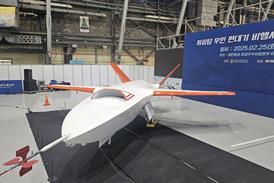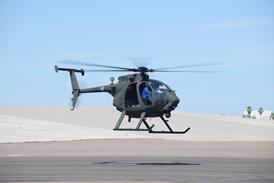L-100 Hercules
The L-100-30 is the civil version of the C-130 Hercules military transport. It is certificated under US Federal Aviation Rules Part 25 to carry 97 passengers when appropriately modified or manufactured.
The passenger version has structural re-inforcement, windows, additional doors and cabin amenities, plus improved environmental conditioning and emergency lighting. Modification from the basic freighter adds 12,710kg to the MTOW.
Southern Air Transport has developed a passenger/cargo "combi" modification for the L-100, which enables the aircraft to carry up to 18 passengers and five main-deck pallets.
A commercial version of the new-generation military C-130J Hercules, intended initially to be a pure freighter and flown in April 1996, has been proposed. The aircraft will have a glass cockpit (with provision for head-up displays), Allison AE2100-D3 turboprop engines and Dowty R391 six-bladed propellers. There is an optional 3.5m-wide door in the forward fuselage, which allows an additional, sixth, pallet to be carried. A seventh pallet can also be carried, courtesy of a modified ramp.
Compared with earlier L100s, it should have a 61% payload-range improvement, 15% increase in block speed, 21% decrease in fuel consumption, 38% decrease in crew cost and 69% decrease in maintenance costs.
L-1011 TriStar
The L-1011 TriStar had its first flight in 1970, and a total of 249 was delivered between 1972 and 1983, when production ceased (the prototype was never sold), of which some 226 remain in existence. Production included 200 "long-body" TriStars (-1, -100 and -200) and 50 short-fuselage, extended range, -500s. All versions were powered by the R-R RB211.
Lockheed developed several after-market upgrades for the long-body TriStar, which included various weight increases and additional fuel capacity, to provide better payload/range performance. An upgrade to -100 specification was available, as well as modification packages which created three new variants (never delivered new) - the -50, -150 and -250.
The latter was the most radical conversion developed, and combines the uprated R-R RB.211-524B4I of the -500, with additional fuel capacity and higher MTOW (through structural strengthening) to give a 9,410km range, similar to that of the rival MDC DC-10-30.
Two companies, Marshall Aerospace of the UK and Lockheed Martin Aircraft Services (LMAS -formerly Lockheed Aircraft Service - LAS), offer a cargo-conversion programme for the TriStar.
Marshall, which has taken orders for 12 conversions, delivered the first aircraft to launch customer American International Airways in August 1995.
The Lockheed-Martin programme, which is dubbed "TriStar 2000", has not yet received a launch order.
Source: Flight International























